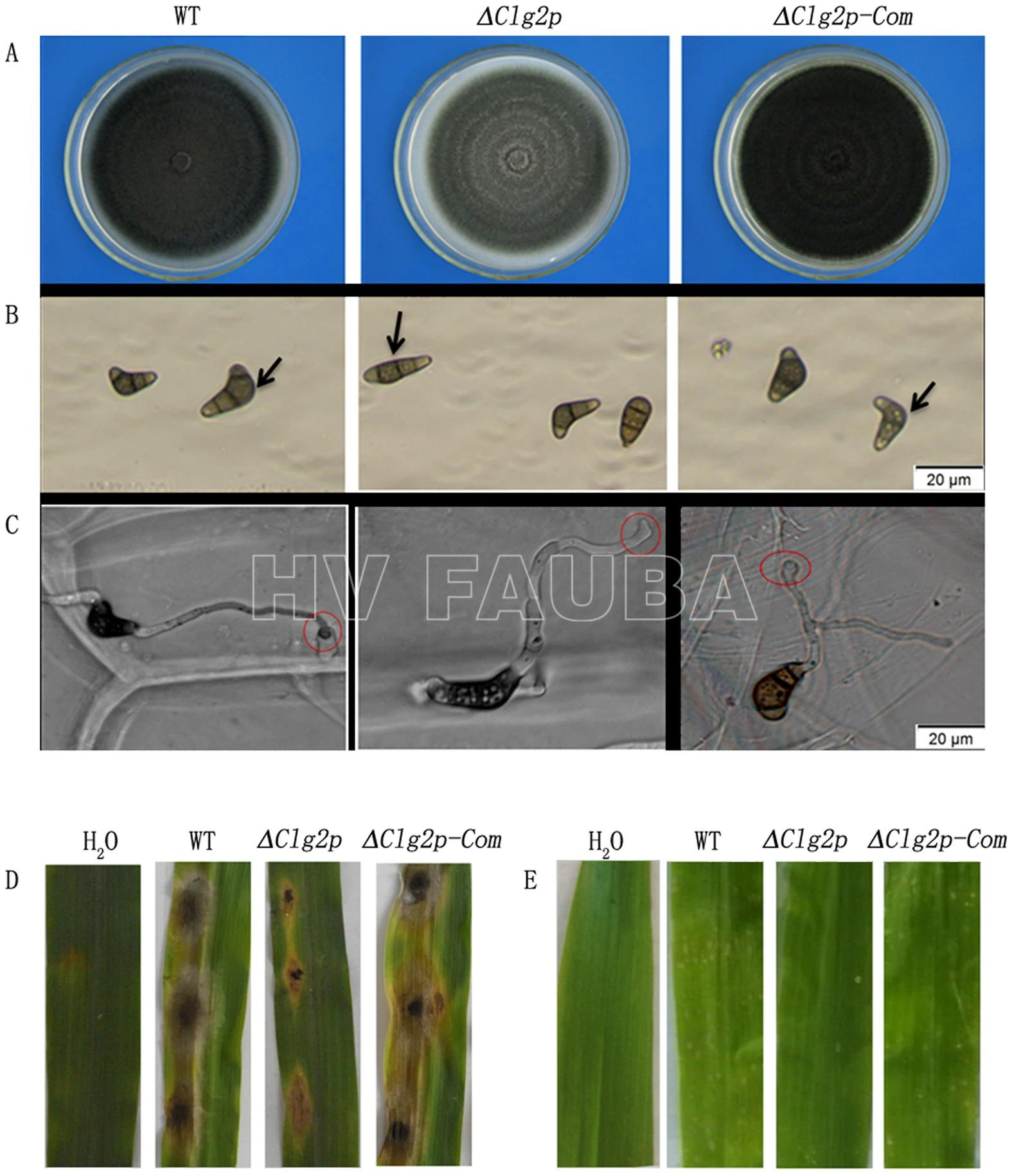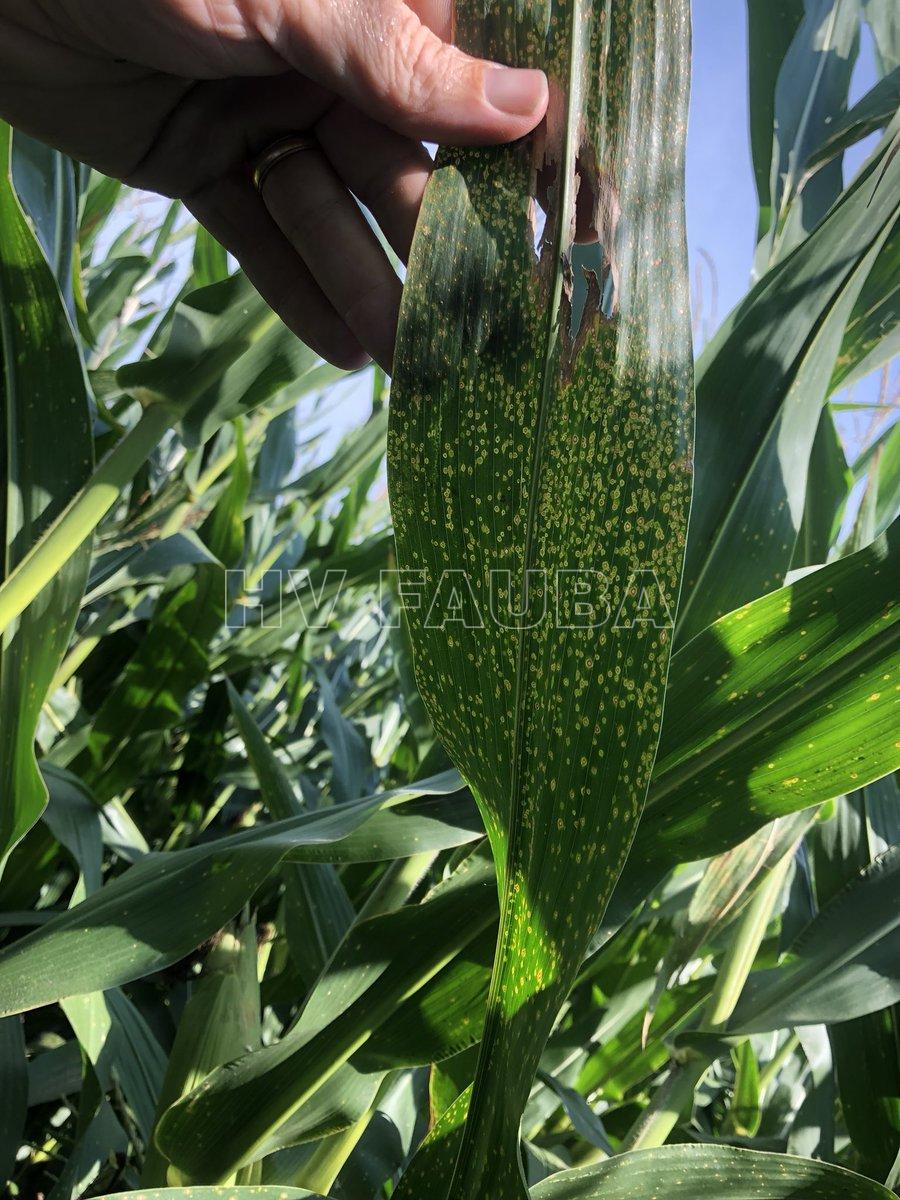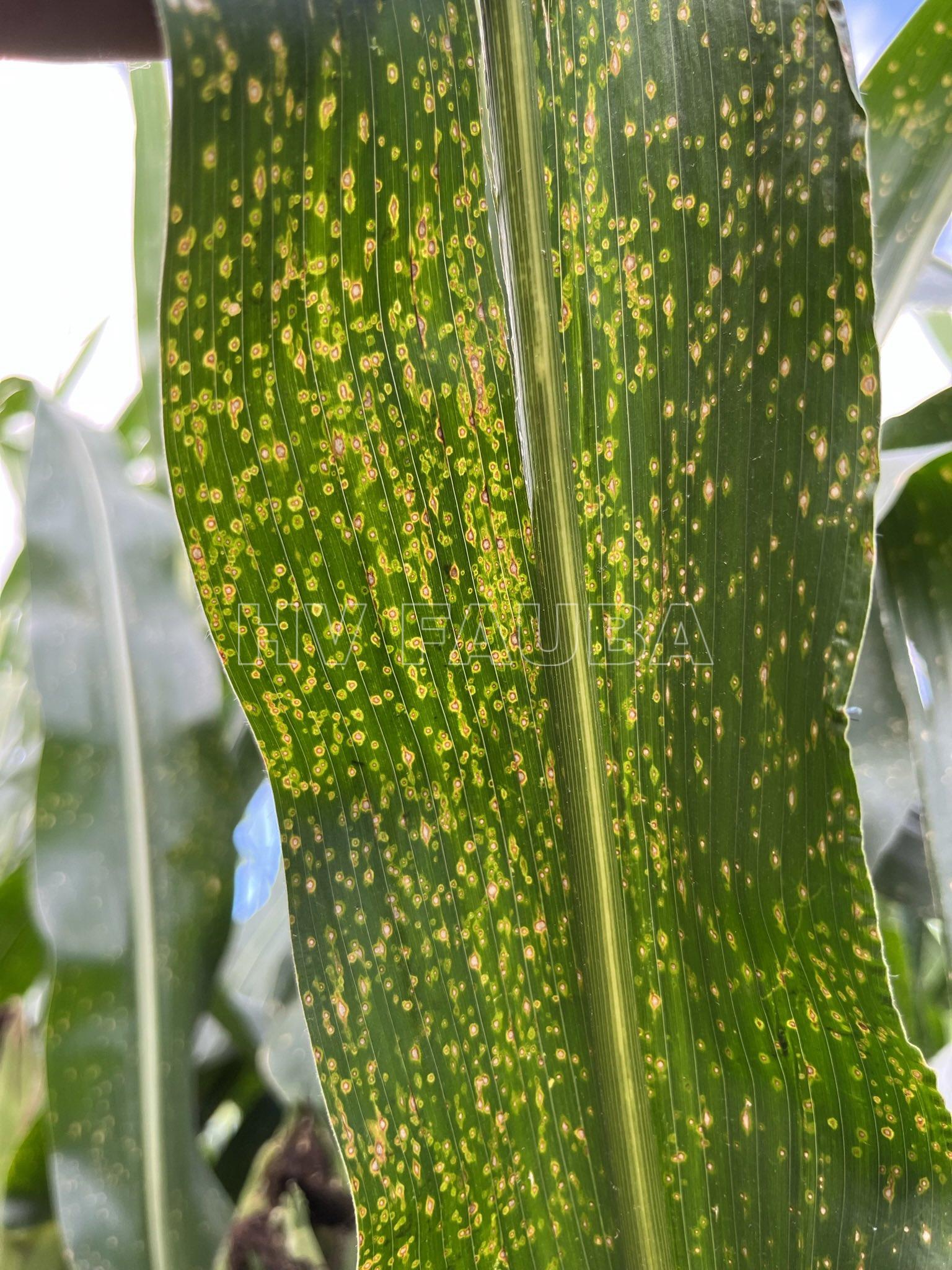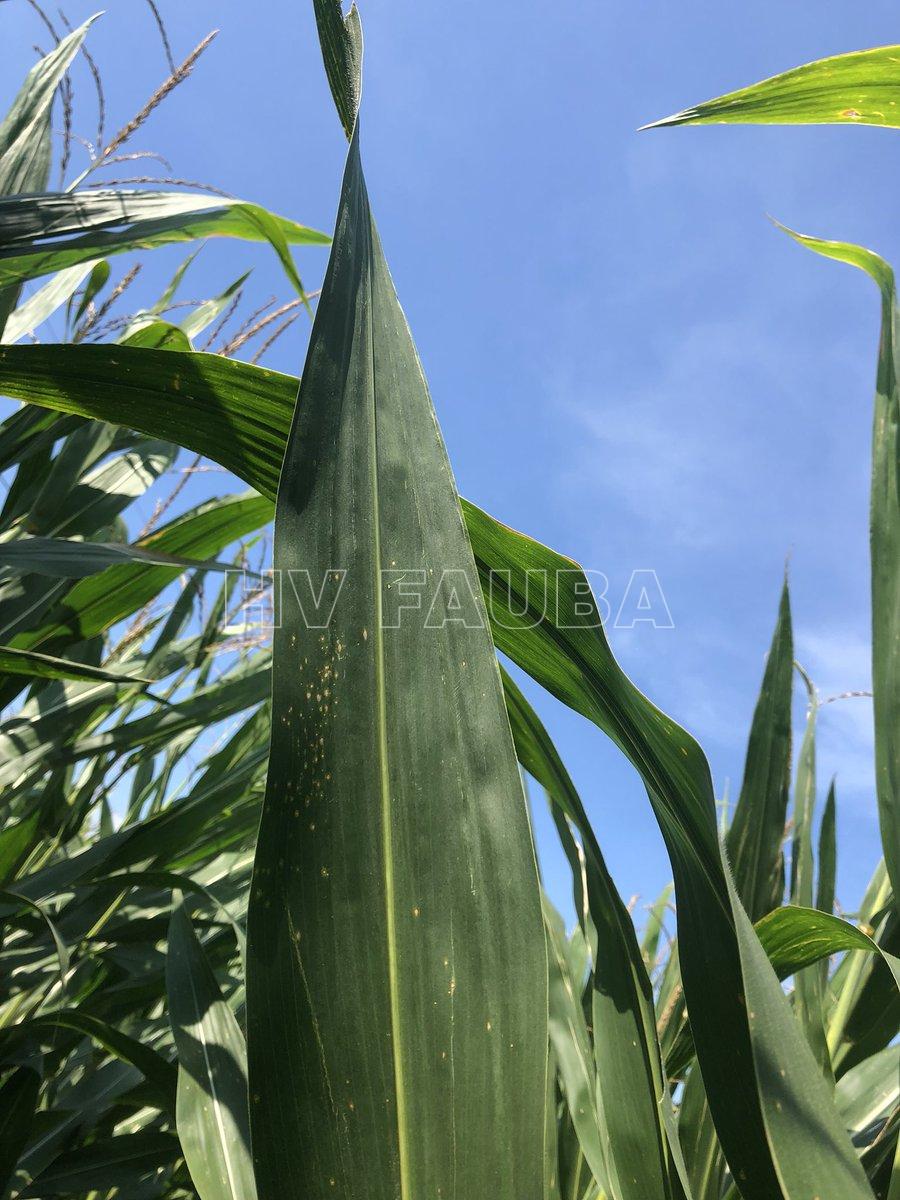.
Condición fitosanitaria: Presente
Grupo de cultivos: Cereales
Especie hospedante: Maíz (Zea mays)
Etiología: Hongo. Hemibiotrófico
Agente causal: Curvularia lunata (Wakker) Boedijn, 1933 (anamorfo), Cochliobolus lunatus (teleomorfo)
Taxonomía: Eukaryota > Fungi > Dikarya > Ascomycota > Pezizomycotina > Dothideomycetes > Pleosporales > Pleosporaceae > Curvularia
.
.
- Autor: Liu et al., 2016
.
.
.
Sintomatología
Los síntomas incluyen lesiones foliares de color marrón claro , de forma redonda a ovalada (0,5 a 2,0 mm de diámetro) con márgenes de color marrón rojizo, a menudo con halos cloróticos en el follaje medio a superior del canopeo en la etapa de cuaje (R2).
Los síntomas son simialres a la mancha ocular causada por Kabatiella zeae (Narita & Y. Hirats).
.
.
- 01 Mancha por Curvularia en maiz. Autor: Tom Allen
- Autor: Tom Allen
- 02 Mancha por Curvularia en maiz. Autor: Tom Allen
.
.
Bibliografía
Akram W, Anjum T, Ahmad A, Moeen R (2014) First Report of Curvularia lunata Causing Leaf Spots on Sorghum bicolor from Pakistan. Plant Disease 98(7): 1007-1007. doi: 10.1094/PDIS-12-13-1291-PDN
Alex D, Li D, Calderone R, Peters SM (2013) Identification of Curvularia lunata by polymerase chain reaction in a case of fungal endophthalmitis. Medical Mycology Case Reports 2: 137-140. doi: 10.1016/j.mmcr.2013.07.001
Gao SG, Ni X, Li YY, et al. (2017) Sod gene of Curvularia lunata is associated with the virulence in maize leaf. Journal of Integrative Agriculture 16(4): 874-883. doi: 10.1016/S2095-3119(16)61513-7
Garcia-Aroca T, Doyle V, Singh R, et al. (2018) First Report of Curvularia Leaf Spot of Corn, Caused by Curvularia lunata, in the United States. Plant Health Progress. doi: 10.1094/PHP-02-18-0008-BR
Hou J, Ma B, Zuo Y, et al. (2013) Rapid and sensitive detection of Curvularia lunata associated with maize leaf spot based on its Clg2p gene using semi‐nested PCR. Lett Appl Microbiol, 56: 245-250. doi: 10.1111/lam.12040
Liu T, Liu L, Jiang X, et al. (2009) A new furanoid toxin produced by Curvularia lunata, the causal agent of maize Curvularia leaf spot. Canadian Journal of Plant Pathology 31(1): 22-27. doi: 10.1080/07060660909507568
Liu T, Ma BC, Hou JM, Zuo YH (2014) Isolation and Characterization of the PKAr Gene From a Plant Pathogen, Curvularia lunata. Indian J Microbiol. 54(3): 310-314. doi: 10.1007/s12088-013-0439-3
Liu T, Zhao FZ, Wang YY, et al. (2015) Comparative analysis of phylogenetic relationships, morphologies, and pathogenicities among Curvularia lunata isolates from maize in China. Genet. Mol. Res. 14 (4): 12537-12546. doi: 10.4238/2015.October.16.21
Liu T, Wang Y, Ma B, et al. (2016) Clg2p interacts with Clf and ClUrase to regulate appressorium formation, pathogenicity and conidial morphology in Curvularia lunata. Scientific Reports 6: 24047. doi: 10.1038/srep24047
Macri F, Di Lenna P (1974) Corn leaf blight incited by Curvularia lunata (Wakk.) Boed. Rivista di Patologia Vegetale 10(1): 27-35. Link
Madrid H, da Cunha KC, Gené J, et al. (2014) Novel Curvularia species from clinical specimens. Persoonia 33: 48-60. doi: 10.3767/003158514X683538
Mourão DSC, Ferreira de Souza Pereira T, Souza DJ, et al. (2017) Essential Oil of Cymbopogon citratus on the Control of the Curvularia Leaf Spot Disease on Maize. Medicines 4(62). doi: 10.3390/medicines4030062
, , , et al. (2024) SreC-dependent adaption to host iron environments regulates the transition of trophic stages and developmental processes of Curvularia lunata. Molecular Plant Pathology 25: e13444. doi: 10.1111/mpp.13444
Xu S, Chen J, Liu L, et al. (2007) Proteomics Associated with Virulence Differentiation of Curvularia lunata in Maize in China. Journal of Integrative Plant Biology 49: 487-496. doi: 10.1111/j.1744-7909.2007.00469.x
Zhang L, Li H, Xiao S, et al. (2016) Efficient Agrobacterium tumefaciens-mediated target gene disruption in the maize pathogen Curvularia lunata. European Journal of Plant Pathology 145(1): 155–165. doi: 10.1007/s10658-015-0825-2



